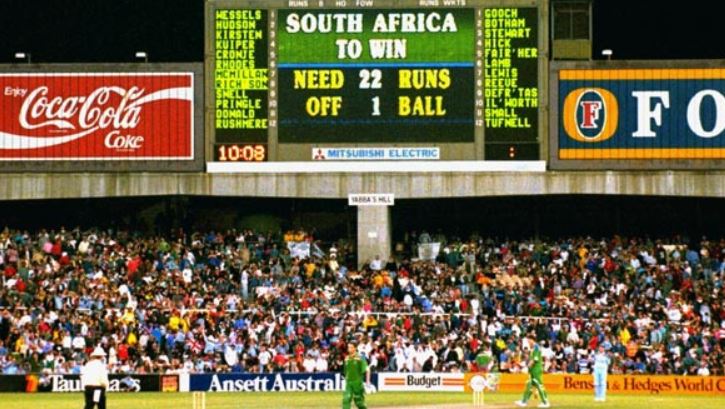Duckworth-Lewis Stern (DLS) method plays a key role in the limited-overs cricket, especially when the rain gods decide to interfere in a game. It was renamed to Duckworth Lewis Stern method in late 2014. The DLS 1.0 was in effect during the CWC 2015 while the second version of it was introduced in 2016. The latest version, DLS 3.0, came into effect from 29th September 2018. The ODI series between South Africa and Zimbabwe that took place on Sunday under its new version.

The recent version of the DLS method is based on an analysis of the information gathered from 700 ODIs and 428 T20Is, which comprise over 240,000 outcomes of individual deliveries. This includes some of the high scoring matches in the recent past, as a result, the average team total in consideration is also increased. The latest version of DLS would have affected a lot of matches of the past.
ALSO READ: ICC Introduces Updated DLS System And Playing Conditions
Those include the famous the 1992 semi-final where South Africa turned up to chase 21 runs in a delivery based on a rain-rule method before the existence of the DL method. (Scoreboard showed 22 instead of 21 runs) If the slow overrate of South Africans that reduced the game to 45 overs a side is not considered, they would have needed three runs to win on the final ball as per the latest update.
Here are 5 ODI matches that could have had a different result as per the latest DLS update:
1. ICC World Cup 2003 – South Africa v Sri Lanka, Durban:

South Africa was in a desperate need of a win against Sri Lanka to qualify to the Super-6s round of 2003 World Cup but got knocked out of the home World Cup as the game ended in a Tie. Mark Boucher defended the last ball before the rain stoppage as his skipper Shaun Pollock read 229 was a par score as the target required. Finishing on 230 would have seen them through to next round.
But Boucher, unknowingly, did not try to take a single off the last ball of the 45th over and ended up on 229/6. According to the DL version of that time, the par score of South Africa was 229. However, the same situation as per the DLS 2.0 (228) or DLS (227) 3.0 would have taken them through to the next round.




